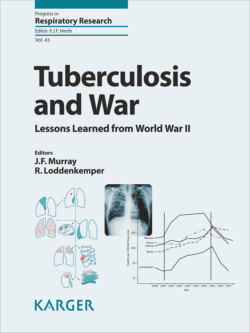Читать книгу Tuberculosis and War - Группа авторов - Страница 25
На сайте Литреса книга снята с продажи.
Thirty Years’ War
ОглавлениеThe Thirty Years’ War encompassed a series of immensely destructive conflicts in Central Europe, chiefly Germany, from 1618 to 1648. Before the war, certain agreements attempted to create toleration of religious activities of both Catholics and Protestants, but in 1618, Heir-Apparent Ferdinand II, Holy Roman Emperor of Bohemia (crowned the following year), restricted religious practices among Protestants. Other Protestant states, England, the Dutch Republic, Denmark came to their brethren’s support, but Ferdinand’s allies, German Catholics, Spain, and the papacy were victorious, overrunning much of Protestant Germany and Denmark, with considerable help from mercenary armies [77].
In 1630, the Swedish army led by King Gustavus Adolphus and his Protestant soldiers conquered most of the German lands and kingdoms. Four years later, Spain gained ascendancy and defeated Swedish forces, but then France began to take over, reigniting the Habsburg-French rivalry. From 1636, Swedish, French, Spanish, and Austrian armies conducted ruthless “scorched earth warfare” aimed at destroying as much as possible of what remained of Germany, and left behind a landscape in which famine and starvation were equally destructive to civilians. The cost in German lives was horrific, 20% of inhabitants overall, but as high as 50% in and around Pomerania, and 8 million total. Bubonic plague caused outbreaks throughout the war; typhus and dysentery were endemic; and even scurvy caused numerous deaths during the unsuccessful siege of Nuremberg in 1632. Perhaps the only reprieve of the 30 years’ war was the steadily declining role of religion, which had long been a major destabilizing influence in European politics and which led to the Peace of Westphalia, a series of treaties consummated in 1648 that effectively ended the wars of religion and established the sovereign state system [78].
